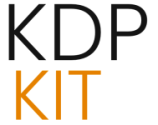2025 eBook Publishing: KDP Changes & Top Platforms

The world of eBook publishing is always on the move, and 2025 is no different. Amazon Kindle Direct Publishing (KDP) is still a big deal, but there are some important updates authors need to know about, especially concerning print books. It’s a dynamic scene, and staying on top of it is key for anyone looking to make their mark in digital publishing. These shifts aren’t just small tweaks; they can have a real impact on how authors earn and reach their readers.
Navigating the Evolving eBook Publishing Landscape in 2025
The digital publishing world is constantly changing, and 2025 brings its own set of developments that authors need to be aware of. Amazon KDP continues to be a central player, but recent news highlights how dynamic this sector really is. It’s a story that’s getting a lot of attention, and understanding these changes is super important if you’re an author or even just thinking about getting into digital publishing. The updates around KDP, in particular, could affect more than just individual writers; they might shape the whole publishing ecosystem.
Key Platforms for eBook Publication in 2025
Amazon Kindle Direct Publishing (KDP): The Dominant Force
Let’s face it, Amazon KDP is still the go-to for self-publishing eBooks worldwide. Its massive reach and huge user base make it a must-consider for authors wanting to get their books seen. KDP makes it pretty easy to upload your manuscript, create a cover, and set your price, giving authors a lot of control. Plus, you get access to Amazon’s massive marketplace, including Kindle Unlimited and the Kindle Owners’ Lending Library, which can really boost your visibility and earnings.
KDP Royalty Structure Adjustments for Print Books
A big change for 2025 is how royalties are calculated for print books on KDP. Starting June 10, 2025, Amazon has tweaked the royalty rates for paperbacks and hardcovers priced below certain amounts. Before, you could usually expect a 60% royalty for books in those lower price ranges, but now it’s dropping to 50% for titles in those specific brackets. This means if you price your print books affordably to attract more readers, you might see a bit less per sale unless you adjust your pricing strategy. These price thresholds can vary by region, too, which is something to keep in mind.
Offsetting Royalty Changes with Printing Cost Reductions
To help balance out those royalty changes for print books, Amazon KDP is also cutting some printing costs for certain paperback titles in specific areas. For example, on Amazon.com, the cost for printing a color page is going down slightly. While it might not seem like a huge deal, these savings can add up, especially for books with lots of pages. It’s a way to help authors maintain their profit margins even with the adjusted royalty percentages. It seems like Amazon is trying to find a middle ground between their own costs and what authors earn.
The Importance of Pricing Strategy in the New KDP Environment
With the new KDP royalty structure for print books, it’s really important to rethink your pricing. Authors now need to pay attention to those regional price points that determine whether you get the higher 60% royalty rate. Pricing your book above these thresholds means you’ll continue to earn that higher percentage. This adds a layer of complexity, as you’ll need to balance competitive pricing with maximizing your income. Your decision might depend on your book’s content, who you’re trying to reach, and your own financial goals. It’s definitely worth checking out the detailed info Amazon KDP provides on these regional thresholds to make smart pricing choices.
Focus on Ebook Royalties: Stability Amidst Print Changes
It’s worth noting that these royalty rate changes, which kicked in on June 10, 2025, only affect print books. The royalty rates for Kindle eBooks are staying the same. So, if you’re primarily publishing eBooks, these print-specific adjustments won’t directly impact your earnings. The stability of eBook royalties is a big plus for many authors, reinforcing the value of digital publishing within the KDP system.
KDP’s New Emphasis on Ebook Accessibility
A recent development from Amazon KDP is the introduction of questions about eBook accessibility during the publishing process. This is a great move to help visually impaired readers by making eBooks easier for everyone to use and navigate. KDP is now asking authors to share information about their eBook’s accessibility features, like making sure images have captions or alt text. This reflects a growing trend in the industry to be more inclusive and focus on user experience. Authors might want to brush up on accessibility best practices to meet these new requirements and make their digital books even better.
Draft2Digital: Streamlining Distribution and Merging with Smashwords
Draft2Digital is a platform that many authors highly recommend because it’s so easy to use and offers great distribution services. It’s free to start, and their royalty rates are competitive, often reaching up to 60%. A major development was their merger with Smashwords, another big player, back in early 2022. This combination has created a more powerful distribution network, now handling publishing and distribution to a wider range of outlets, including major retailers like Amazon, Apple Books, Barnes & Noble, and Kobo. Draft2Digital also provides helpful resources for authors, like author pages and book tabs, which can be a good alternative to having your own website. Their automated formatting service is a real lifesaver, turning basic Word documents into professional eBooks for free. Plus, their sales tracker gives you valuable insights into how your books are performing.
For more on how to get your book distributed widely, check out Draft2Digital’s website.
Apple Books for Authors: Direct Access to Apple’s Ecosystem
Apple Books for Authors gives authors a direct way to publish and distribute their eBooks within Apple’s huge ecosystem. This platform offers a nice 70% royalty rate and is particularly good for reaching the massive user base of iOS devices. While it might not have the same overall market share as Amazon, its direct access to millions of loyal Apple users is a significant advantage for authors wanting to connect with a dedicated audience.
IngramSpark: Global Reach and Extensive Distribution Networks
IngramSpark is a powerful option for authors who want really extensive global distribution. They have one of the largest book distribution networks out there, giving you access to over 45,000 libraries, retailers, and online stores, including big names like Amazon and Apple. The platform offers a high royalty rate of 85% of net revenue, which is pretty attractive. However, there are some content restrictions to be aware of. For instance, if your eBook content is already on Apple Books, you’ll need to remove it before uploading to IngramSpark. Also, if you’ve published eBooks on Amazon for Kindle in the past year, IngramSpark might not be able to distribute to Kindle. This means you’ve got to be strategic about your distribution to avoid conflicts and make sure you’re reaching as many readers as possible.
You can learn more about their distribution services at IngramSpark.
Lulu: Versatile Publishing Options
Lulu offers a wide range of publishing services, perfect for both digital and print-on-demand needs. It’s a great choice if you want to publish both eBooks and physical copies of your work. Lulu provides print-on-demand capabilities, global distribution, and really good eBook formatting tools. Their royalty rates can be as high as 90%, which is definitely appealing if you’re looking to earn more per sale.
Kobo Writing Life: International Presence and Competitive Royalties
Kobo Writing Life is a major player in the eBook market, available in over 190 countries. While it’s not quite on the same scale as Amazon, Kobo’s international reach is pretty substantial. The platform converts your manuscripts into EPUB format, which is a widely used standard for eBooks. Kobo offers a 70% royalty rate for eBooks priced at £1.99 or more (or the equivalent in other currencies). Books priced below that threshold earn a 45% royalty. One of the best things about Kobo Writing Life is that it lets you publish simultaneously on multiple platforms. This means you can maximize your visibility by distributing your work on Kobo while also listing it on other retailers. It’s a really flexible approach that helps you reach a diverse global readership.
Barnes & Noble Press: Digital Transition and Integrated Services
Barnes & Noble Press is the digital evolution of that familiar bookstore chain. This platform lets authors publish both eBooks and print books easily through one interface. It offers a 70% royalty rate for eBooks and gives you access to Barnes & Noble’s promotional programs and discount opportunities, which can be a big help with marketing. The platform also offers print-on-demand services, making it a comprehensive solution for authors who want to manage both their digital and physical book sales.
The Profitability of Amazon KDP in 2025: A Nuanced Perspective
So, is Amazon KDP still profitable in 2025? The answer is a bit more complicated than a simple yes or no. You can definitely make money with KDP, but it’s not a platform for folks looking for a quick, easy buck without putting in the work. Success on KDP in 2025, just like in previous years, really comes down to providing genuine value to readers through well-written and well-researched content. How profitable KDP is for you will depend a lot on how well you research your niche, figure out if the market is saturated, and develop strategies to stand out from the crowd. It’s not just about publishing; it’s about publishing smart.
Strategies for Success on Amazon KDP
Niche Research and Market Differentiation
Doing your homework on niche research is super important for finding profitable markets and understanding who else is out there. You’ve got to look at whether your chosen niche is already flooded or if there are chances to make your work unique. Having a clear plan for how to stand out is essential in a busy marketplace. This means keeping up with market trends and what readers want so you can position your book effectively. It’s like finding your own little corner of the market.
Content Quality and Value Proposition
The absolute core of succeeding on KDP is the quality and value your book offers. Just publishing a book without focusing on giving readers something valuable probably won’t lead to lasting success. Authors who put effort into creating engaging stories, informative content, or unique perspectives are more likely to build a loyal following and achieve long-term success. This means going beyond surface-level stuff and delivering a product that really connects with what readers need and are interested in. Your book needs to offer something special.
Publishing Cadence and Diversification
If you’re aiming for significant income through KDP, publishing more than one book a year can be a smart move. A consistent publishing schedule, along with offering a variety of content, can help you build your author platform and attract a wider audience. While overnight success is pretty rare, consistently putting out quality work can lead to substantial profits over time. Think of it as building momentum.
Navigating Account Terminations and Platform Risks
Lately, there’s been talk about account terminations and book blocks on Amazon KDP, which has caused some worry for authors. These situations highlight just how important it is to follow Amazon’s terms of service and maintain ethical publishing practices. Authors who focus on creating legitimate content and being transparent in their business dealings are less likely to run into these kinds of problems. Understanding and respecting the platform’s guidelines is crucial for keeping a stable presence and avoiding disruptions to your publishing career. It’s all about playing by the rules.
The Broader Implications of Evolving Publishing Platforms
The continuous evolution of eBook publishing platforms, including the recent developments at Amazon KDP, really shows how much the digital publishing industry is maturing. These changes point to a growing focus on accessibility, user experience, and making sure authors are fairly compensated. As the industry moves forward, authors who stay informed about these trends and adjust their strategies accordingly will be in the best position to succeed. The way platforms update, market demands shift, and authors innovate will all continue to shape how books are created, distributed, and consumed in this digital age. It’s a constantly shifting landscape.
Conclusion: Adapting and Thriving in the 2025 Publishing Landscape
To sum it all up, the eBook publishing scene in 2025 is all about innovation and adaptation. Amazon KDP is still a major force, even with those changes to its print book royalty structure. Platforms like Draft2Digital, Apple Books, IngramSpark, Kobo, and Barnes & Noble Press offer diverse ways for authors to reach readers globally. The key to doing well in this environment is understanding what makes each platform unique, matching your publishing strategies to your personal goals, and consistently delivering high-quality content that readers will love. By staying informed and being flexible, authors can successfully navigate the complexities of digital publishing and build lasting careers in the year ahead. It’s an exciting time to be a writer!
For more insights into the publishing industry, you might find these resources helpful:
Here’s a video that might give you some extra tips on eBook publishing:
And another one that dives deeper into KDP strategies:









